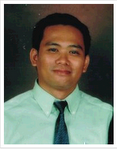PTSD is one of only a few disorders in DSM-IV that is defined by its cause. Without a stressor, the disorder cannot exist, but the trauma is not sufficient; many traumatized people do not have the disorder. The relative importance and the predisposing elements of the trauma are not clearly understood; the same is true for other causative factors. An interactive relation may exist between one even and one victim. At all events, no model of the cause of PTSD would be complete unless it took into account pretrauma (that is, personal vulnerability), trauma (stressor characteristics), and posttrauma variables.
A. STRESSOR
A consistent relation emerges between the magnitude of the stress exposure and the risk of PTSD. The relation holds true across several kinds of trauma, including combat, homicidal crime, and sexual trauma. No evidence suggests that a certain threshold of severity must be met, nor does good evidence suggest that low-magnitude stress (for example, divorce, loss of income, chronic illness in the family) gives rise to PTSD to any appreciable extent.
Besides the events involving actual or threatened death or injury or a threat to the physical integrity of the self or others, cognitive appraisal factors are probably important. For example, one study noted that a rape victim’s perception of being in a safe place at the time of the assault predicted high levels of symptoms. The experience of being intensely afraid, helpless, or horrified is a likely risk factors. Extreme shame or guilt may also be a risk factor, as in the participants in a brutal atrocity.
B. BIOLOGICAL FACTORS
Numerous psychophysiological and neurochemical systems appear to be implicated in PTSD. Although not proved, the assumption is that changes in those systems were absent before the trauma and that the trauma itself is the inciter of short-term and long-term functional and structural changes. Some indirect evidence supports the contention.
1. Sympathetic activity
Several studies show that enduring autonomic arousal exist in chronic PTSD arising from both civilian and military trauma. Elevated heart rate and elevated 24-hour urinary catecholamines both suggest increased sympathetic tone. Comparable with that interpretation are findings of lowered platelet monoamine oxidase (MAO) acticity and of α-adrenoreceptor activity. However, there is some debate as to whether tonic increases of catecholamines are present in PTSD once the duration of baseline is taken into account. Studies which employed longer baseline rest periods did not find an increase in norepinephrine.
Further evidence of abnormal noradrenergic functioning in PTSD comes from studies which show increased psychophysiological reactivity to yohimbine (Yocon), an α2 antagonist. Symptoms of PTSD are increased when yohimbine is given to patients with PTSD.
Heightened sympatethic arousal in combat veterans with PTSD is seen when they are exposed to reminders of their original trauma, as shown by heart rate, blood pressure, electromyography, and sweat activity. Enduring arousal in response to combat cues occurred in veterans with PTSD but not in combat veterans without PTSD but with other forms of anxiety. That finding confers a specificity to the diagnosis that allows the conclusion that cue-specific arousal in PTSD is more than a nonspecific index of anxiety-proneness. Recent studies have indicated a promising application of that paradigm to the diagnosis of PTSD as part of a multimodal assessment. Enduring arousal is accompanied not only by anxiety but also by anger and depression. The fact that those emotions may be primal can be taken to support the view that PTSD is best classified not as an anxiety disorder but in separate category.
2. Neuroendocrine functions
Several studies have examined hypothalamo-pituitary-adrenal (HPA) function in PTSD. Both reduced and elevated levels of 24-hour urinary cortisol have been reported, an inconsistency that has not been satisfactorily resolved. Possible explanation include (1) differences in the collection or assay procedure, (2) differences in the type of PTSD, and (3) differences in the symptomatic state (that is, acute exacerbation versus chronic stable symptoms). One study found basal plasma cortisol to correlate with increased PTSD severity; lowered cortisol may bespeaks a pattern of denial. Therefore, conceivable some people with the disorder have decreased guilt and relative lack of denial and, perhaps, increased urinary cortisol levels.
One study found a blunted adrenocorticotropic hormone (ACTH) response after a challenge with corticotrophin-releasing hormone (CRH). That finding was correlated with PTSD symptom severity but not with depression severity, suggesting a specific relation between PTSD symptoms and HPA axis dysfunction.
Recently, some researchers found a supersensitivity and an increase in glucocorticoid receptors in combat veterans with PTSD. Furthermore, a relation was found between HPA axis dysfunction and the disorder’s symptom severity.
3. Other biological factors
Opioid system abnormalities, including a naloxone (Narcan)-reversible analgesia in combat veterans who were exposed to remainders of trauma, have been seen. The degree of analgesia so induced was comparable to the analgesia produced by an 8 mg dose of morphine sulfate. The full relevance of such findings is unclear; perhaps the numbing and dissociative components of PTSD are mediated by changes in the opiate system.
Animal models and the clinical effects of fluoxetine (Prozac) in PTSD both suggest that serotonin is implicated. In further support is evidence that some serotonin agonists can evoke symptoms of PTSD in combat veterans with that diagnosis.
Abnormal event-related potential (ERP) indices of information processing have been found in PTSD, indicative of problems distinguishing target and distractor (that is, relevant and irrelevant) stimuli. Those may form the basis of concentration and memory impairment, and be reflective of an underlying noradrenergic fault.
4. Sleep studies
Studies of prisoners of war from Wolrd War II, 30 years after their exposure to trauma, and studies of Vietnam veterans with PTSD have revealed increased rapid eye movement (REM) sleep and decreased stage 2 sleep. Following treatment with doxepin (Adapin), REM sleep measures were reduced, while the restorative stages 3 and 4 sleep increased.
Of importance to the separation of PTSD from major depressive disorder is the fact that the REM alterations of PTSD do not share many of the characteristics found in major depressive disorder, such as shortened latency or increased early sleep REM.
C. PSYCHOLOGICAL FACTORS
Three relevant psychological models – based on psychodynamic, cognitive and information-processing, and behavioral theories – have been advanced.
1. Psychodynamic theory
Sigmund Freud and other early analysts made several attempts to explain the symptoms and the cause of traumatic neurosis. An early formulation contended that trauma revives the original childhood neurosis through regression. Later, an energy model was postulated in which a strong external trauma causes a disturbance in the organism’s energy. The stimulus barrier or protective shield is exceeded. Defensive mechanisms, such as repression of the event and undoing (in dreams and compulsive repetition of the trauma), are the ego’s attempts to cope with the event and to drain off excess energy. Fixation on the trauma is important to the theory. Severe trauma with a chronic course and a poor response to treatment may lead to two unmodifiable ego changes: ego exhaustion and changes in the ego-superego boundary as a result of overwhelming guilt and shame.
Other analysts revised the concept of a stimulus barrier, changing it from a passive shield to an active attempt by the ego to protect itself against traumatization: The trauma must be understood in terms of the person’s psychic reality and how the person interprets and the reacts to the experience. Psychic trauma may result in the person’s being overwhelmed with emotion and becoming terrified of the emotion’s uncontrollable elements. The central role of affect in the theory explains such phenomena as affective blocking, alexithymia, and chronic depression.
2. Cognitive and information-processing theory
After severe stress some persons are unable to process and assimilate the event adequately or to deal affectively with its effects. Because trauma may require its victims to make unaccustomed changes in their plans, satisfactory assimilation of the experience may be difficult, prolonged, and sometimes incomplete. Unfortunately, the experience is kept alive as an active memory and repeatedly intrudes into awareness. Because such experiences are painful, the person attempts to deny or to avoid the experience; by such avoidance, levels of anxiety may be reduced. In PTSD, those intrusive and avoidance phases alternate. The degree of distress, the impact of the event, can be measured by a 15-item self-rating scale.
Information-processing models have been invoked to account for the development of the disorder. Fear may be stored as a memory network that contains information about danger-related stimuli. Because life-threatening trauma evokes a powerful response, that particular fear structure remains intense and easily activated. Distinctions between what is safe and what is dangerous are unclear, and persons who are strongly influenced by such fear structures may feel both lack of control and lack of predictability with respect to their environments.
3. Behavior theory
Behavior theory posits a two-factor learning process in PTSD. In the first phase, persons exposed to a trauma (the unconditioned stimulus) learn by association to be upset by central events, images, thoughts, or situations that occur in proximity to the trauma (the conditioned stimulus).
Instrumental learning leads to the second factor, avoidance of both the unconditioned stimulus and the conditioned stimulus; that process is sustained because it leads to a decrease in anxiety. High-order conditioning occurs; ultimately, a wide range of stimuli elicit arousal (stimulus generalization). Although the two-factor theory has been criticized, it provides a theoretical basis for treating PTSD by means of direct therapeutic exposure to cues of the original trauma, an approach that may be beneficial.
Nursing Process for Client with Post Traumatic Stress Disorder.Yunina Elasari Copyright © 2009 Designed by Ipietoon Blogger Template for Bie Blogger Template Vector by DaPino


























0 komentar:
Posting Komentar